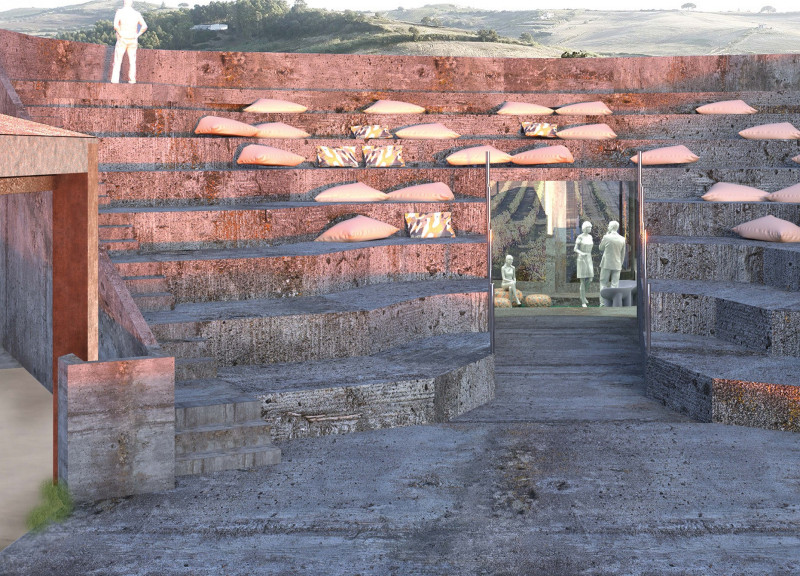5 key facts about this project
The Vinho Playroom is an architectural project located in the picturesque vineyards of Portugal, specifically situated within the Monte D'Óro landscape. This design serves as a multipurpose venue for leisure and social engagement, emphasizing a focus on the region's rich wine culture. The architecture melds seamlessly with its surroundings, fostering a deep connection between the indoor space and the external environment.
The project comprises a series of terraces that reflect the vineyard's topography, emphasizing the importance of landscape integration in architectural design. By utilizing a combination of concrete, glass, wood, fabric, and brick, the building not only achieves structural integrity but also enhances visual and tactile experiences for its users.
Unique Design Approaches
One distinguishing feature of the Vinho Playroom is its stepped terraces which provide both functional and aesthetic benefits. These levels create informal gathering spaces that are perfect for events or casual relaxation, while the sunken lounges within the building promote a sense of intimacy among occupants. This approach encourages social interaction and enhances the user experience, making it more than just a recreational facility.
The design also takes advantage of large glass windows that allow natural light to flood the interior, creating an environment that feels open and connected to the landscape. This transparency bolsters the connection to the vineyards and encourages an appreciation of the outdoor scenery, highlighting the region’s natural beauty.
Functional Layout
The layout of the Vinho Playroom is meticulously planned to ensure a fluid circulation throughout the space. Steeped ramps and staircases facilitate accessibility, allowing users to move freely between the different levels and functions within the building. Moreover, the diverse lounge areas are strategically placed to maximize comfort and social engagement, offering various settings for relaxation or conversation.
In summary, the Vinho Playroom exemplifies a thoughtful approach to architectural design that prioritizes both aesthetic sensibility and functional effectiveness. The interrelation of form and function, coupled with its contextual responsiveness, sets this project apart from typical recreational structures. For a more detailed exploration of the architectural plans, sections, and designs that underpin this project, interested readers are encouraged to review additional materials related to the Vinho Playroom.





















































